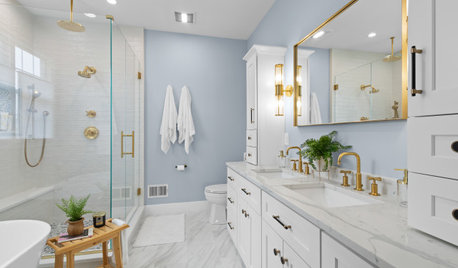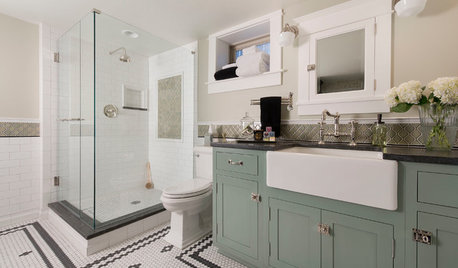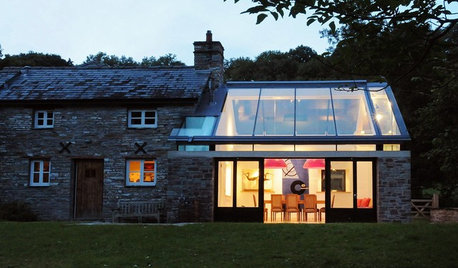Water Pressure, what's right?
staze
15 years ago
Related Stories

SAVING WATERIs a Rainwater Cistern Right for You?
These extra-large containers reduce runoff and save on the use of potable water for the landscape
Full Story
GARDENING GUIDESHow to Find the Right Native Plants for Your Yard
Find plant maps, sale sites and guides that make going native in the garden easier than ever
Full Story
BATHROOM DESIGNHow to Choose the Right Bathroom Sink
Learn the differences among eight styles of bathroom sinks, and find the perfect one for your space
Full Story
BATHROOM DESIGNHow to Choose the Right Toilet
Style, seat height, flushing options, color choice and more will help you shop for the right toilet for you
Full Story
MOST POPULARHow to Choose the Right Kitchen Sink
Learn about basin configurations, sink shapes, materials and even accessories and specialty sinks
Full Story
FENCES AND GATESHow to Choose the Right Fence
Get the privacy, security and animal safeguards you need with this guide to fencing options
Full Story
KITCHEN APPLIANCESLove to Cook? You Need a Fan. Find the Right Kind for You
Don't send budget dollars up in smoke when you need new kitchen ventilation. Here are 9 top types to consider
Full Story
BUDGETING YOUR PROJECTDesign Workshop: Is a Phased Construction Project Right for You?
Breaking up your remodel or custom home project has benefits and disadvantages. See if it’s right for you
Full Story
BEDROOMSThe Right Mattress: The Secret to a Great Night’s Sleep
We spend a third of our lives asleep, so investing in a quality mattress is essential. Check out this expert advice to help you choose yours
Full Story
REMODELING GUIDESDesign Workshop: Is an In-Law Unit Right for Your Property?
ADUs can alleviate suburban sprawl, add rental income for homeowners, create affordable housing and much more
Full StoryMore Discussions






tim45z10
stazeOriginal Author
Related Professionals
Arlington Handyman · Fish Hawk Handyman · Hillcrest Heights Handyman · Shamong Kitchen & Bathroom Remodelers · Camarillo Kitchen & Bathroom Remodelers · Champlin Kitchen & Bathroom Remodelers · Deerfield Beach Kitchen & Bathroom Remodelers · Folsom Kitchen & Bathroom Remodelers · Garden Grove Kitchen & Bathroom Remodelers · Martha Lake Kitchen & Bathroom Remodelers · Morgan Hill Kitchen & Bathroom Remodelers · North Arlington Kitchen & Bathroom Remodelers · Sweetwater Kitchen & Bathroom Remodelers · Travilah Kitchen & Bath Fixtures · Paradise Kitchen & Bath Fixtureslazypup
stazeOriginal Author
stazeOriginal Author
tim45z10
lazypup
stazeOriginal Author
precision4535_att_net